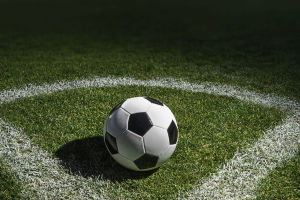Tennis is a sport that thrives on its diversity, and one of the most exciting aspects for fans is the variety of surfaces where major tournaments take place. Whether it's the hard courts of the US and Australian Opens, the clay courts at the French Open, or the iconic grass courts at Wimbledon, each surface introduces its own challenges and rewards.
In this article, we explore the impact of different court surfaces on match outcomes, strategies, and how players like Reese Stalder, ATP's world-ranked #60 doubles player, adjust their game to these diverse terrains.
Hard Courts: A Platform for Aggression
For Reese Stalder, who grew up playing on the outdoor hard courts of Southern California, hard courts are synonymous with aggressive tennis. "Hard courts reward first strike tennis," Stalder says. "Big serves and big hits dominate the game. It’s about controlling the points early because once you’re on the defense, it’s harder to regain control."
Clay vs. Hard Courts: Patience and Adaptation
The contrast between clay and hard courts is striking, with the former demanding more patience and strategic play. On clay, the ball slows down significantly, often causing higher bounces that allow players more time to react. “On clay, movement and strategy are key,” Stalder explains. “It’s about outlasting your opponent in long rallies, something that European and South American players excel at.”
However, this shift in pace isn’t always advantageous for everyone. “American players who grow up on fast hard courts tend to opt for low-percentage plays, trying to hit their way out of trouble rather than defending with height and spin,” Stalder notes. This preference for power can sometimes hinder the development of defensive and strategic skills that are crucial on slower surfaces like clay.
Grass Courts: A Unique Challenge
Grass courts stand as a unique and beloved part of tennis, yet their short season—lasting about a month—makes them a rare challenge for most players. Grass courts are notoriously difficult to maintain and often wear down as the tournament progresses, especially in areas like the baseline and net.
The lower bounce of grass courts rewards players who like to come to the net and finish points quickly. Historically, grass courts favored a serve-and-volley style, but changes in grass maintenance have made the surface faster and more similar to hard courts. Stalder recalls his first professional grass experience at Wimbledon: “was expecting a major shock, but the grass courts were not as drastically different from other surfaces as had imagined.”
ATP Season & Surface Adaptation: Flexibility is Key
Unlike other sports with rigid schedules, the ATP season offers players a flexible calendar that allows them to tailor their schedules to their strengths. For example, during the transition from clay to grass, clay court specialists often skip the grass season to focus on clay tournaments. Stalder himself exemplifies this adaptability, having played 22 tournaments on hard courts, five on clay, and just two on grass so far this year.
Developing through Different Surfaces
Each surface offers unique challenges that help shape a player’s development. Hard courts tend to encourage aggressive, power-driven tennis, while clay courts nurture patience and strategic thinking. Grass courts offer a combination of both, requiring players to adjust quickly and be versatile in their approach.
Conclusion: The Beauty of Adaptation
Ultimately, tennis is a sport defined by its variety, and the diverse surfaces players compete on only add to the excitement. Whether on hard, clay, or grass courts, the ability to adapt is crucial for success. As players like Reese Stalder demonstrate, mastering these different surfaces and strategically choosing events based on their strengths is key to thriving on the ATP tour. And for fans, watching these adjustments in real-time is what makes the game truly captivating.
Tennis Court Surfaces Explained!
Video by Tennis Warehouse


